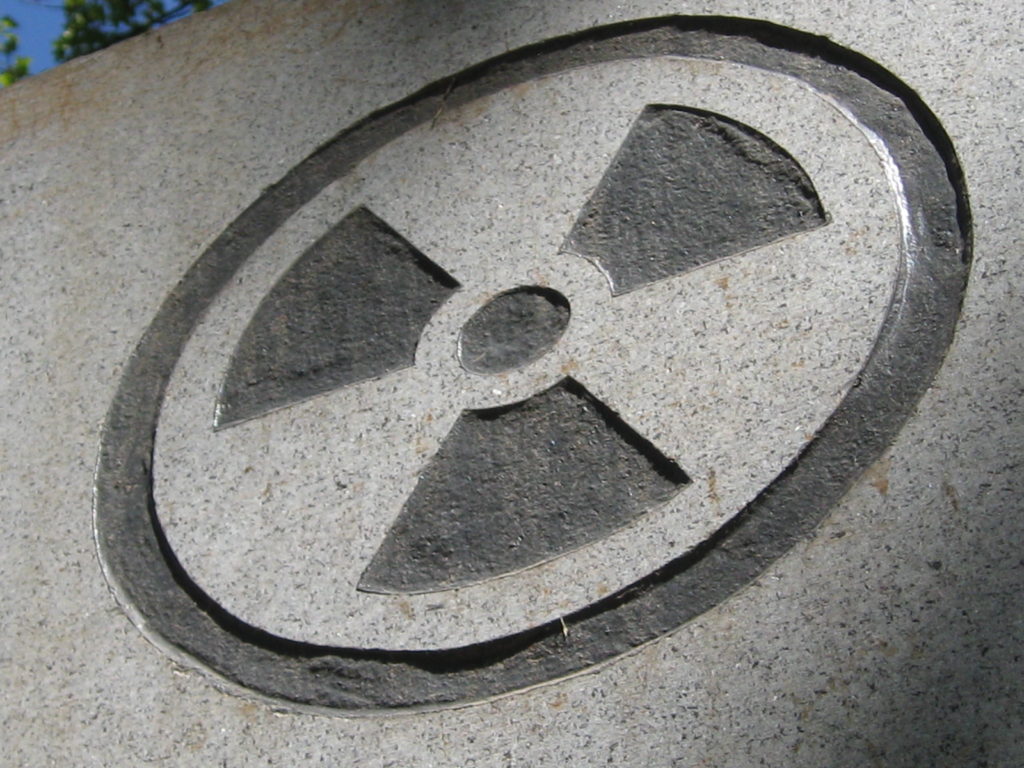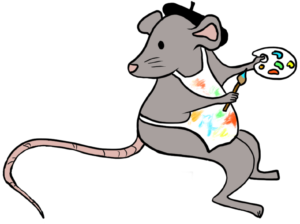Part 2: The Message
2.3.1 Calm Down: Assessing, Understanding, and Dealing with Outrage
Learning Objectives
- To provide examples of scenarios that can cause outrage, explain why they cause outrage, and suggest ways in which the outrage can be addressed.
- To describe potential barriers to outrage reduction and propose how those barriers could be overcome.

A key task in risk communication is measuring the outrage around a topic. Outrage has many components, but according to Sandman, twelve dominate most risk conversations, ten of which are features of the hazard itself and two of which relate to the communication process. For each driver of outrage, we can determine where on the spectrum our particular issue sits — this is called Outrage Assessment.
To assess outrage you need to ask the following questions:
| Question | Explanation | Solution |
| Is it voluntary or coerced? | Voluntary hazards (e.g., smoking) tend to be more acceptable than those that are non-voluntary (e.g., having a wind farm put up near your home). | Can you make the hazard more voluntary (e.g., providing warning labels or signage)? |
| Is it natural or industrial? | People are more accepting of natural risks (e.g., UV radiation from the sun) than unnatural ones (e.g., industrial radiation). | Acknowledge people’s discomfort with the unnatural. DON’T try to point out natural variants of the hazard or suggest that your unnatural hazard is less ‘risky’ than a natural one. Natural and unnatural hazards are judged on different outrage metrics. |
| Is it familiar or exotic? | The familiar (e.g., the common cold) is always less scary than the exotic (e.g., Ebola). | Don’t try to soothe people. Acknowledge the hazard is unfamiliar and try to make it more familiar (e.g., try to provide people with first-hand experience). |
| Is it memorable or not memorable? | Memorable hazards (e.g., Fukshima, Chernobyl) generate more outrage than non-memorable ones (e.g., car accidents). Hazards become memorable when people have personal experience with them, when they receive lots of news coverage, when they are incorporated into popular culture, symbology, etc. | Acknowledge that the hazard is memorable. Talk about it to death (including what was learned from the memorable event) until it becomes memorable but familiar (see above). |
| Is it dreaded or not dreaded? | HIV is dreaded and has a lot of stigma; hepatitis C doesn’t have the same history and is not dreaded as much. | Again, acknowledge the dread. Empathizing and legitimizing peoples feeling will help people to get the dread under control. |
| Is it chronic or catastrophic? | People tend to be more concerned with catastrophe (e.g., natural disasters) than chronic hazards (e.g., liver cirrhosis). This is because the same number of deaths cause greater disturbance to our society if they occur at the same time versus far apart. | Don’t tell people not to worry. Work to reduce the magnitude of the hazard whenever possible, even when the probability of that hazard occurring is very low. Also, try to focus people on what is worth worrying about and conduct visible disaster preparedness (i.e., let people know that you are worrying for them). This will be helpful for reassuring people that you can handle a disaster should one occur…and for making sure you actually can. |
| Is it knowable or not knowable? | A hazard becomes unknowable when there is uncertainty, expert disagreement, or difficulty in detection. | Acknowledge uncertainty but explain it is different than ignorance. Tell people what you are doing to reduce uncertainty and how you will make decisions in the face of uncertainty. This may involve being clear to yourself and others about value-based judgements (i.e., risk aversion). Where experts disagree, can you identify a range of possible answers (i.e., is the disagreement really just uncertainty). Try to make risks more detectable to people (e.g., personal radiation detectors for radiation hazards). |
| Is it controlled by me or by others?
|
Control is different than being voluntary — ‘voluntary’ describes who decides on something, ‘control’ describes who implements that something. Both tanning bed use and surgery are voluntary, but tanning bed use is controlled (less potential for outrage) by the individual and surgery is generally not (more potential for outrage). | You cannot disempower people and reassure them at the same time. Where possible, find ways to share control. |
| Is it fair or unfair? | This has to do with the distribution of hazard and benefit. It does not matter that the benefit outweighs the risk if the benefits and risks are going to different places. This inequity is made worse if the process is also perceived as being unfair. | Give communities who are taking on more than their fair share of the risk the right to bargain for compensation. |
| Is it morally irrelevant or morally relevant? | Certain hazards are viewed as simply wrong, unethical, or immoral. For example, BPA in products like baby bottles is more morally relevant than in adult water bottles because we believe it is unethical to harm babies. | If a hazard has even a whiff of morality, then the normal language of tradeoffs cannot be used. Zero is the only acceptable hazard level and you should aim for it even if you cannot achieve it. |
| Can I trust you or not? | When people mistrust an agency they are more likely to become outraged and less likely to pay attention to communications. | Work to build trust but never expect people to trust you. Instead, replace trust with accountability. The best accountability plan is one that is developed in cooperation with your harshest critics. |
| Is the process responsive or unresponsive? | This includes: openness vs. secrecy; apology vs. stone- walling; courtesy vs. discourtesy; sharing vs. confronting community values; and compassion vs. dispassion.
|
Never keep secrets. If you make a mistake admit it, apologize, make reparations, come up with a prevention plan, and then do your penance! Be courteous. Where possible find a communicator who is from (or similar to) the affected community. Be passionate and compassionate (versus cold and technical) in your communication. |

To get answers to these questions we could assess each factor ourselves, speak to people we know to gauge their feelings, organize a formal focus group, administer a survey online, act like an outside observer, and use public spaces to gauge attitudes.
Although most of the preceding discussion has been on the outrage part of the equation, it is important not to ignore the hazard. Specifically, remember that you have an obligation to accurately identify, assess, explain, and reduce the hazard to the extent that it is possible for you to do so. If you can reduce both the hazard and the outrage you will have your best chance at reducing the risk.
Discussion
Additional Dos and Don’ts for Outrage Reduction
Critical thinking is not just an internal process. Once you have decided on your position, you should incorporate your opposition’s points (strong, weak, sensible, crazy) into your argument. Just as a monster is not so scary in the light, your opposition can be addressed more effectively in the open.
An omission is as bad as a lie. You might be scared to inform the public about bad news they don’t currently know about. However, don’t leave any important information out of your communication as your credibility and trustworthiness will be destroyed when people inevitably find out.
A false impression is also as bad as a lie. Think about how a normal member of the public would interpret your messaging. Even if it is technically accurate, if people walk away with an inaccurate perception of the situation then you are being misleading and people will see right through it.
If your opposition is saying that something is “Extremely dangerous!!”, you may have the urge to counter with “Not dangerous at all!”. This is a pretty hard claim to make and people probably won’t believe you. Instead, saying “It is dangerous, but only a little bit” will be more effective at reducing outrage.
But also be clear that there is uncertainly and about the processes that you are putting in place to assess and mitigate the risk.
Humans place more trust in people who also act like real humans. If you acknowledge your problems, then people will put more trust in your solutions.
The one principle that Sandman advocates for above any other is that of acknowledgement. Don’t pretend that something is not happening. Acknowledge that a hazard is frightening, acknowledge if the risks are not equitably distributed, acknowledge that you cannot fix the problem, acknowledge that there is a problem (don’t keep secrets)…and even acknowledge the arguments made by your opponents and be willing to change your position based on their merit. Sandman may not explicitly discuss critical thinking in his work, but a lot of his ideas share these principles.

1. Not wanting to stir the pot if there is not an obvious crisis.
Don’t worry about risk communication activities sparking outrage. If there is outrage, chances are that it has been building up undetected. Waiting until there is an explosion of extreme outrage will make your job much harder. It is better to communicate proactively (versus reactively) and to keep your ear to the ground regarding public outrage.
2. Wanting to attack your opposition. Counter-intuitively, taking your opposition seriously and acknowledging the validity of their concerns will only strengthen your arguments.
With regard to activists, specifically, remember that activists don’t create outrage, so it is important to be introspective and identify your role in creating the problem. Peter Sandman on activists: “Activists are our watchdogs, and we want them to bark even if they are not always sure the intruder is a threat. You might not be a burglar after all, just an innocent visitor, but you are not allowed to kick the dog.”Additionally, kicking the proverbial dog is not a good look. It is better to be cooperative or at least respectful. It will make you harder to demonize in the public eye.
3. Thinking that people are going to be angry no matter what you do.
If you want to do something about the risk, you can change people’s opinions if you communicate it correctly. Sandman advocates for a 4-step process in which you acknowledge that there actually has been a change (versus a progression, evolution, permutation, etc. of your initial approach), apologize for mistakes of the past, actually make the change (preferably including elements of accountability), and acknowledge the force that brought about that change (i.e., don’t take too much credit for it).
4. Dismissing outrage as being irrational
Both hazard and outrage judgements are different perceptions of the same reality. If you try to understand why people are outraged, chances are that it will be a lot more rational than you previously thought.

5. Taking for granted the subjectivity of hazard assessment.
You may feel that your scientific judgement of a hazard is completely objective and irrefutable. Chances are that it is not. There is probably a lot of uncertainly, subjectivity, and value judgement woven into what you perceive as ‘fact’. That is OK, but you need to acknowledge it to yourself and others.
6. Letting the fear of legal implications get in the way of a good risk communication plan.
Sandman says “An approach that leaves you clean in court but very dirty indeed in the minds of legislators and the public is not a winning strategy”. Public opinion may not influence legal decisions, but it does influence the awarding of damages by the court. Try to get the lawyers and communications people together to find a mutually agreeable solution.
7. Final Thoughts
It is important to acknowledge your own psychological barriers. Specifically, if you are harbouring your own internal outrage, you are not going to be very good at helping others to reduce theirs. When you put yourself out there you will undoubtedly have negative experiences that leave you feeling defeated, deflated, and disrespected. This can easily turn into outrage regarding the issue you are dealing with and the others involved in it (particularly members of the public, politicians, and activists).
You need to be able to detect when you are outraged, figure out why, and find a way to separate those feelings from the task at hand. If you can’t then you should probably pass the task to someone who can.

Key Takeaways
- A core task in risk communication is measuring the outrage towards the concept or issue at hand which can be achieved through asking a series of questions.
- Where possible, outrage can be addressed by following a set of dos and don’ts.
- It is important to understand the barriers to outrage reduction and how they apply to your specific situation.
Media Attributions
- Fig 2.1.1.1 Radioactive © Matti Mattila is licensed under a CC BY-NC-SA (Attribution NonCommercial ShareAlike) license
- Fig 2.1.1.2 Women are immunized against cervical cancer and pap smears are conducted in the HPV Immunisation room. Bogota, Colombia. © National Cancer Institute of Colombia is licensed under a CC BY-NC (Attribution NonCommercial) license
- A morning yoga session peering into the jungle in Ubud, Bali. © Jared Rice is licensed under a Public Domain license

